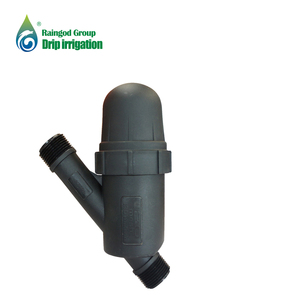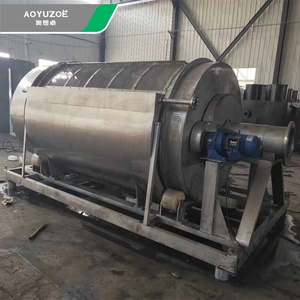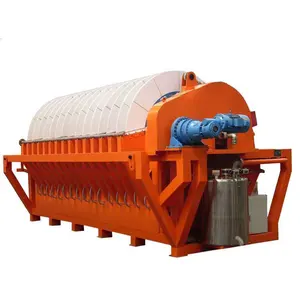(669 products available)








































































































































































































































A small disc filter is a filtration device with a compact disc shape used to remove unwanted particles from liquids or gases. Different types of small disc filters are available, each with specific applications and advantages.
Metal mesh small disc filters
This filter is made of woven metal mesh. It is reusable and suitable for filtering larger particles in applications like hydraulic systems and fuel filters.
Perforated plate small disc filters
This filter consists of a perforated plate material. It is used in applications requiring lower filtration precision, such as pre-filtration and coarse filtration.
Sintered metal small disc filters
This filter is made by sintering metal powder to form a filter element. It is used in applications like oil and water filtration in aerospace industries.
Ceramic small disc filters
This filter is made of ceramic material. It is used in applications that need high filtration precision and chemical resistance, such as semiconductor manufacturing and wastewater treatment.
Fiberglass small disc filters
This filter is made of fiberglass, suitable for filtering corrosive fluids and chemicals, and has a large flow rate.
Polymer small disc filters
This filter is made of polymer materials, such as nylon and polypropylene, suitable for filtering water and other non-corrosive liquids.
Small disc filters have a simple but effective design. They consist of a filtering element between two end discs in a filter assembly. This design allows them to be compact while still providing good filtration.
Filter Element:
The core of the disc filter is its mesh or porous filter element. Made of durable materials like stainless steel, nylon, or polyester, this element features a woven mesh or a series of small pores. These mesh screens come in various sizes, from fine to coarse. The fine mesh captures tiny particles, while the coarse mesh allows for higher flow rates with less filtration resistance.
End Discs:
The end discs provide structural integrity to the filter. They are usually made from the same material as the filter element to ensure uniformity and strength. The end discs also house the inlet and outlet ports for fluid flow. These discs are designed to be easily attached and removed, allowing for quick filter element replacement and maintenance.
Filter Housing:
The filter housing is built to withstand high pressures and corrosive environments. It's often cylindrical, providing a snug fit for the disc assembly. The materials used for housing can be metal or durable plastics, depending on the filter's application and the fluids it handles. The housing may also include features like pressure gauges and flush ports for monitoring filter conditions and performing maintenance.
Seals and Gaskets:
Seals and gaskets are critical for maintaining pressure and preventing leaks in small disc filters. Gaskets, generally made of rubber or silicone, fit between the end discs and the housing to ensure an airtight seal. The seals around the inlet and outlet ports prevent leaks, maintaining the filter's efficiency and safety.
Small disc filters are used in many applications due to their ability to remove contaminants and protect delicate equipment. They are commonly used in the following areas:
When choosing small disc filters for various applications, it is essential to consider specific factors to ensure optimal performance and suitability. First and foremost, define the purpose and application requirements of the filter. Identifying the type of contaminants that need to be filtered out and the desired level of filtration will help select a filter that meets specific needs. Considering the operating conditions in which the filter will be used is also important. Factors such as pressure, temperature, and flow rates should be evaluated to ensure that the filter can withstand the conditions it will be exposed to without compromising its performance or durability.
Another crucial factor is the material of the filter. Small disc filters are commonly made from various materials, including stainless steel, plastic, or brass. The choice of material should be compatible with the fluid or gas being filtered and resistant to corrosion or chemical exposure, if applicable. Additionally, the maintenance and replacement aspects of the filter should be considered. It is essential to evaluate how often the filter needs to be cleaned or replaced and whether it can be easily accessed for maintenance purposes. Cost-effectiveness is also a consideration as it will impact the overall long-term expenses.
Q1. What are small disc filters used for?
A1. Small disc filters are used to remove contaminants from fluids or gases in various industries.
Q2. What materials are small disc filters made of?
A2. They are usually made of plastic, metal, or ceramic to suit different applications.
Q3. How does one choose the right small disc filter?
A3. Consider the application, compatibility with fluids, temperature and pressure ratings, and required filtration.
Q4. Can small disc filters be cleaned and reused?
A4. Some disc filters are reusable and can be cleaned, while others are disposable.
Q5. What industries use small disc filters?
A5. They are used in pharmaceuticals, food and beverage, electronics, and automotive industries, among others.